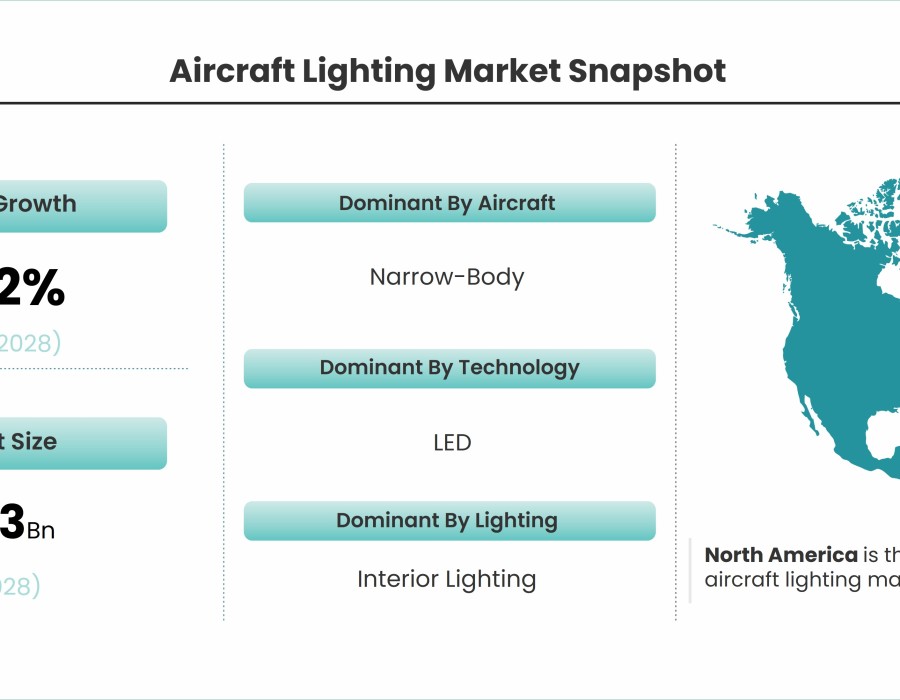The aircraft lighting market is undergoing significant transformation, driven by advancements in technology, evolving consumer demands, and a focus on enhancing passenger experience. However, the market also faces several challenges that could impact its growth trajectory. Understanding these challenges and the opportunities they present is crucial for stakeholders aiming to navigate this dynamic market landscape effectively.
According to Stratview Research, the aircraft lighting market is likely to grow at a promising CAGR of 10.2% during 2023-2028 to reach USD 1.3 billion in 2028.
Key Challenges in the Aircraft Lighting Market
- High Costs of Advanced Lighting Systems
One of the primary challenges in the aircraft lighting market is the high cost associated with advanced lighting technologies, such as LED and smart lighting systems. While these solutions offer long-term benefits, including energy efficiency and reduced maintenance, the initial investment can be prohibitive, especially for smaller airlines and operators. The high costs of research, development, and certification also add to the price, making it a challenge for widespread adoption.
- Stringent Regulatory Standards
The aircraft lighting industry is highly regulated, with stringent safety and performance standards set by authorities like the Federal Aviation Administration (FAA) and the European Union Aviation Safety Agency (EASA). Meeting these regulations requires rigorous testing and certification, which can be time-consuming and costly for manufacturers. Navigating these complex regulatory landscapes can be a significant hurdle, particularly for new entrants in the market.
- Supply Chain Disruptions
The global supply chain disruptions, exacerbated by events like the COVID-19 pandemic and geopolitical tensions, have impacted the availability of raw materials and components used in lighting systems. Delays in production and delivery can lead to increased costs and affect the timely rollout of new lighting solutions. This challenge underscores the need for more resilient and diversified supply chains in the aircraft lighting industry.
Opportunities in the Aircraft Lighting Market
- Rising Demand for Sustainable and Energy-Efficient Solutions
As the aviation industry shifts towards sustainability, there is a growing demand for energy-efficient and eco-friendly lighting solutions. LED lights, which consume less power and have a longer lifespan than traditional lighting systems, are increasingly favored by airlines looking to reduce their carbon footprint. This trend presents a significant opportunity for manufacturers to innovate and offer greener lighting options.
- Technological Advancements and Smart Lighting Systems
The integration of advanced technologies, such as smart lighting systems, offers a significant opportunity for market growth. Smart lighting can be customized to enhance the passenger experience by adjusting light intensity and color based on the time of day, route, or passenger preferences. These technologies not only improve comfort but also contribute to reducing passenger fatigue, making them highly attractive to airlines.
- Expansion of the Aircraft Fleet and Retrofitting Market
The expansion of global aircraft fleets, driven by increasing air travel demand, presents a lucrative opportunity for the aircraft lighting market. Additionally, the retrofitting of older aircraft with modern lighting systems offers a secondary revenue stream for manufacturers. As airlines seek to update their fleets with the latest technologies, the demand for innovative lighting solutions is expected to rise.
Conclusion
The aircraft lighting market faces several challenges, including high costs, regulatory hurdles, and supply chain issues. However, these challenges are coupled with significant opportunities, particularly in the areas of sustainability, technological innovation, and fleet expansion. By addressing these challenges and capitalizing on emerging trends, the aircraft lighting market is well-positioned for continued growth and evolution.






Comments